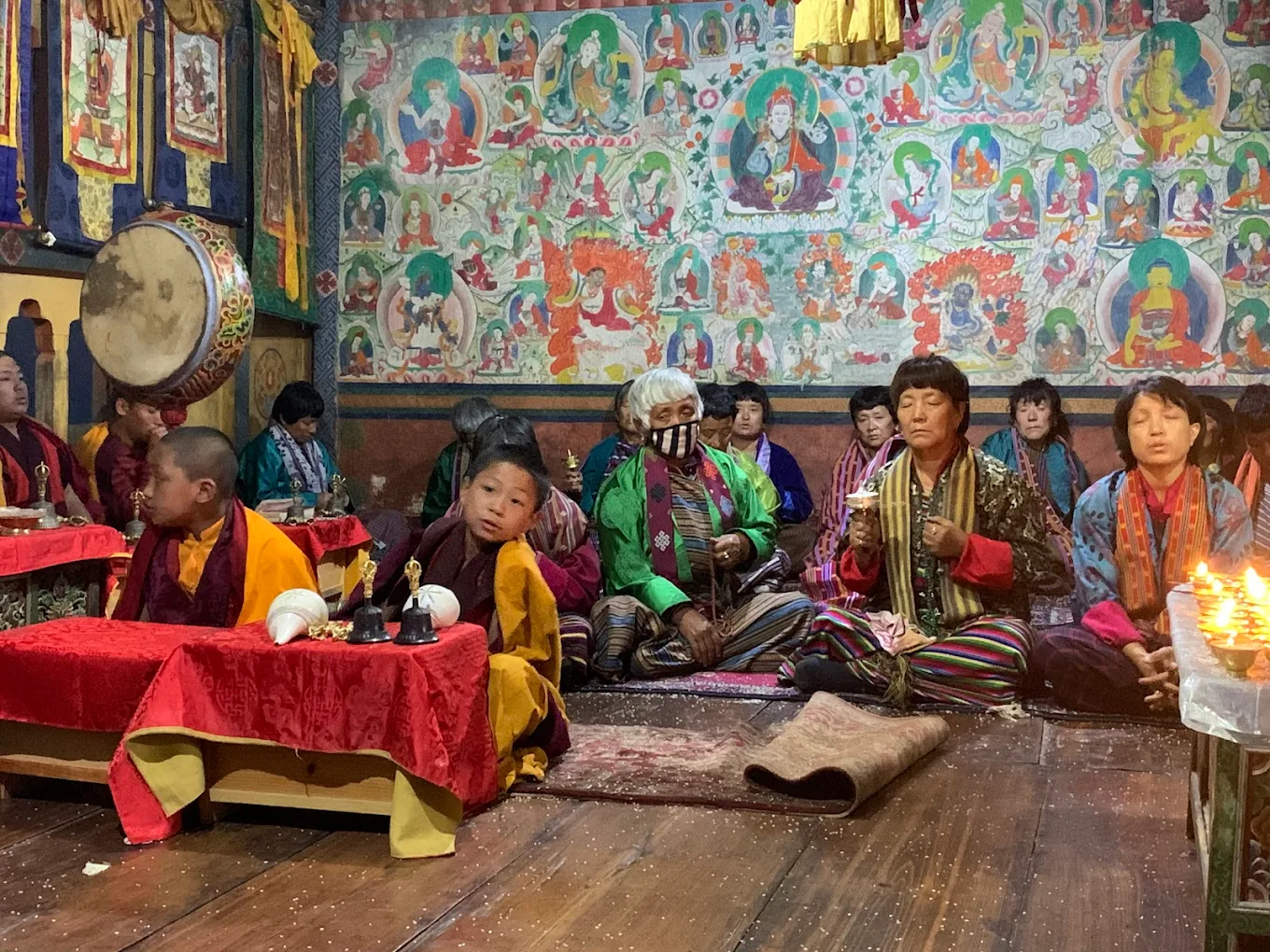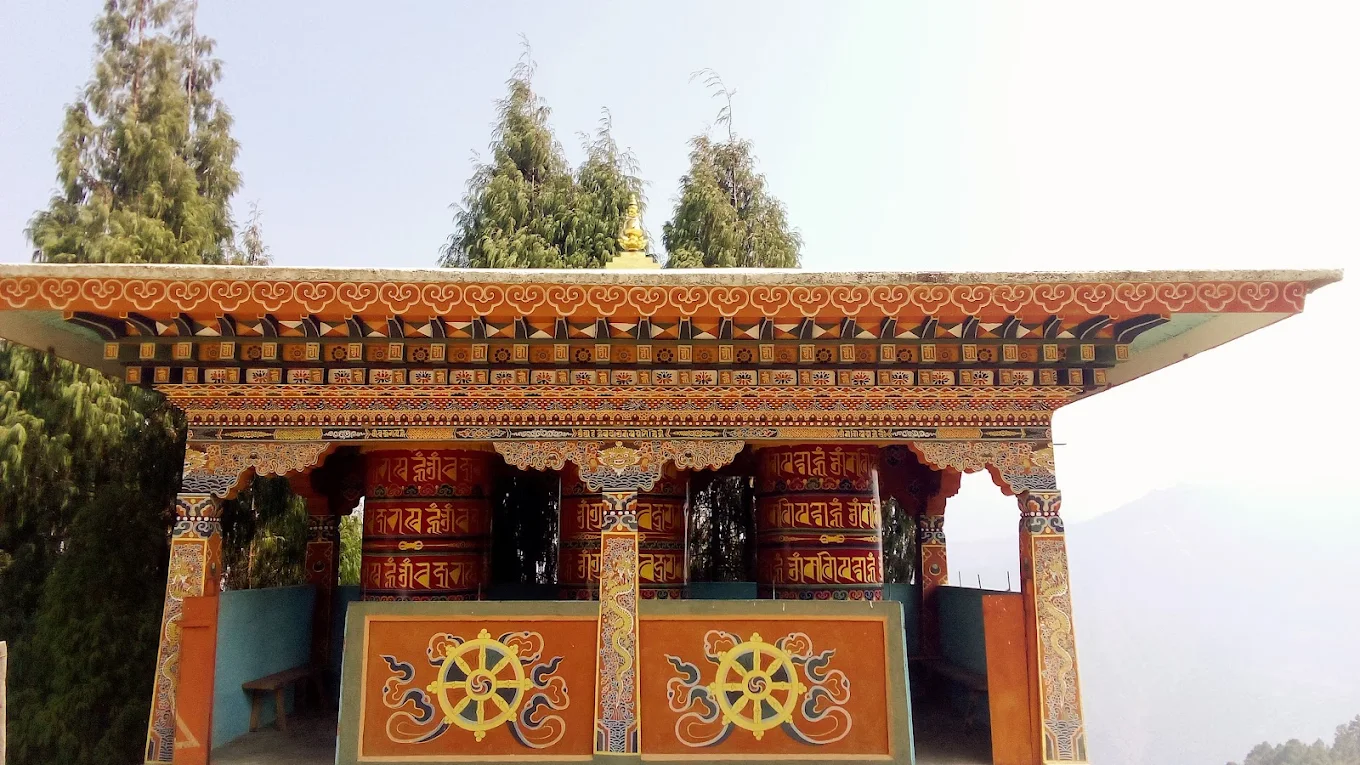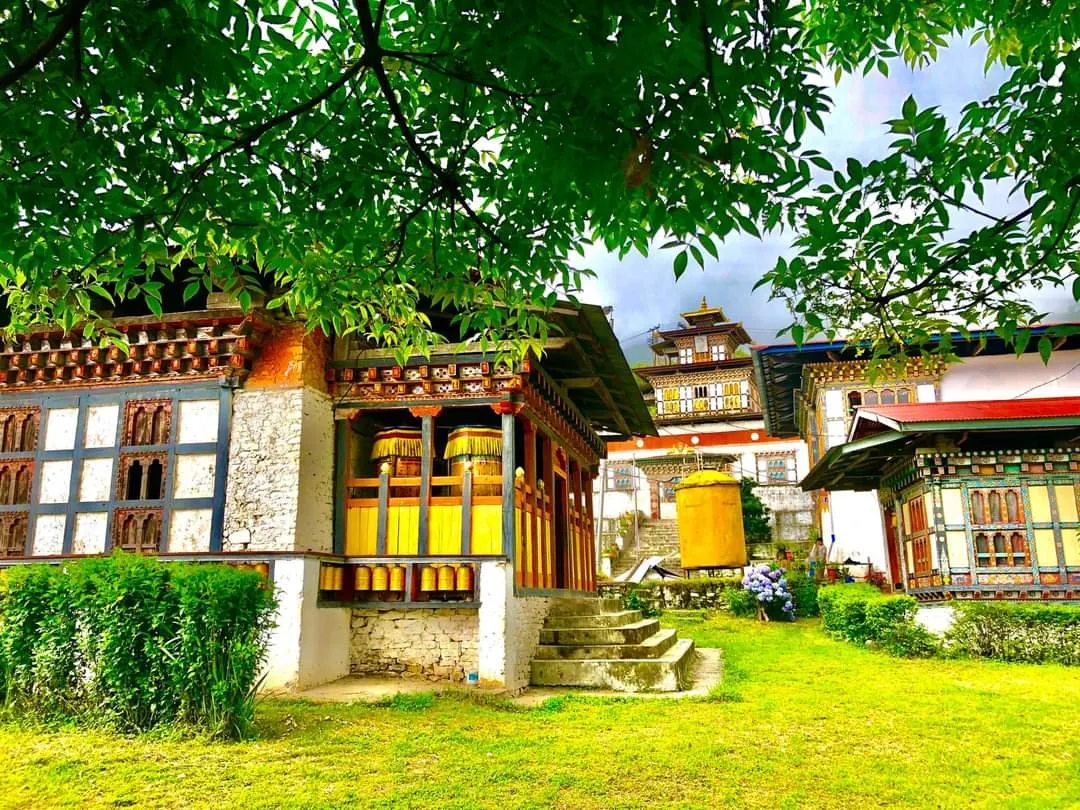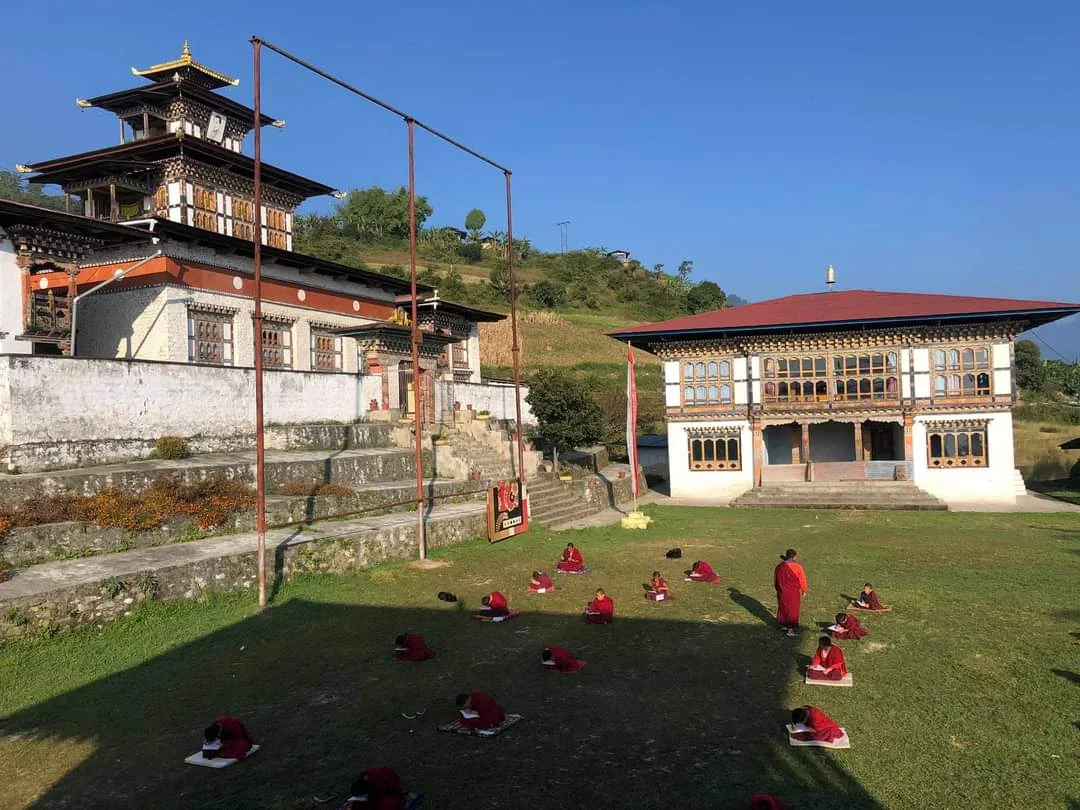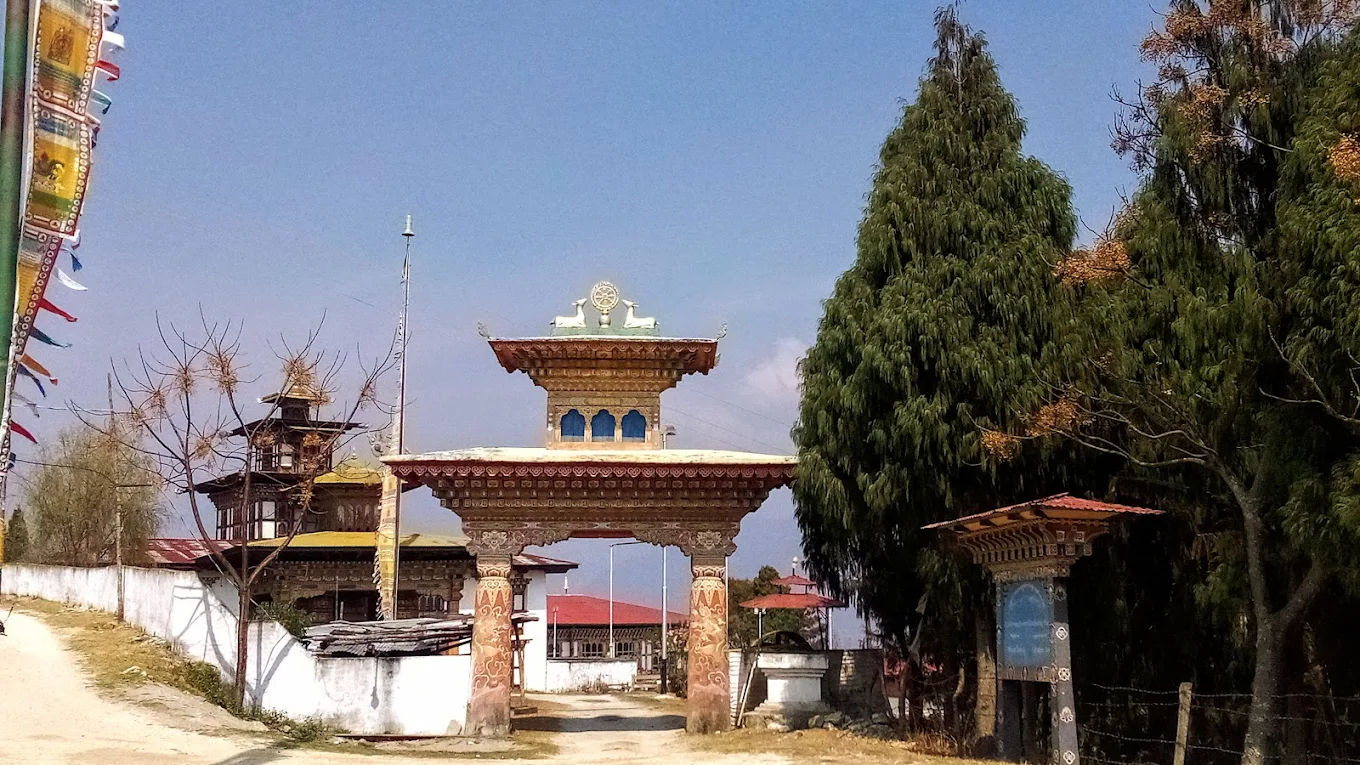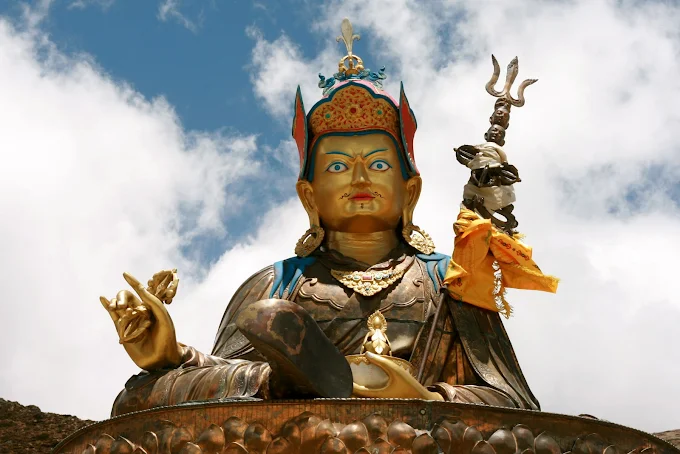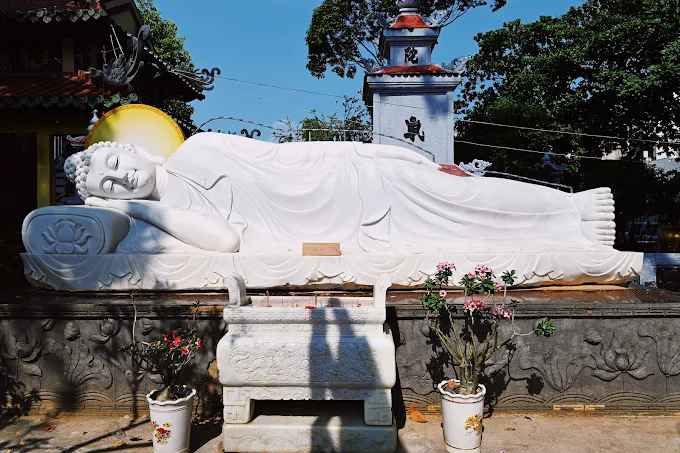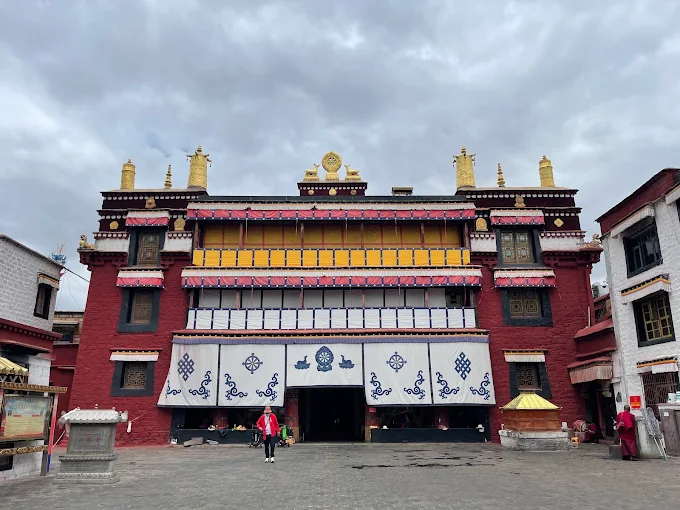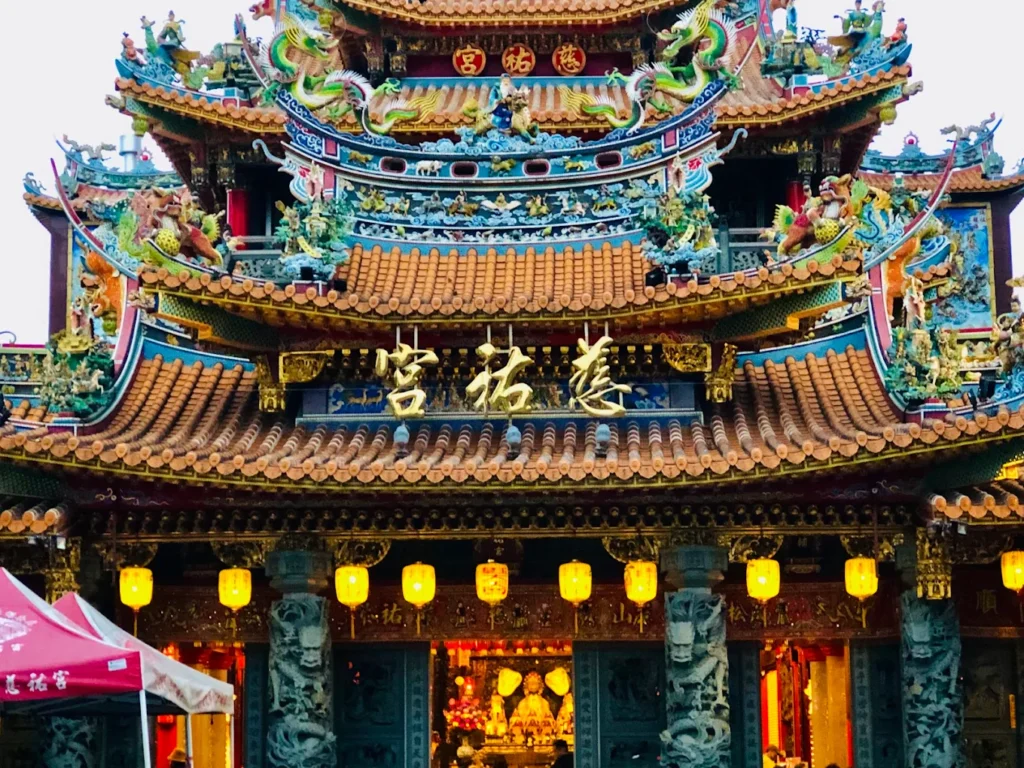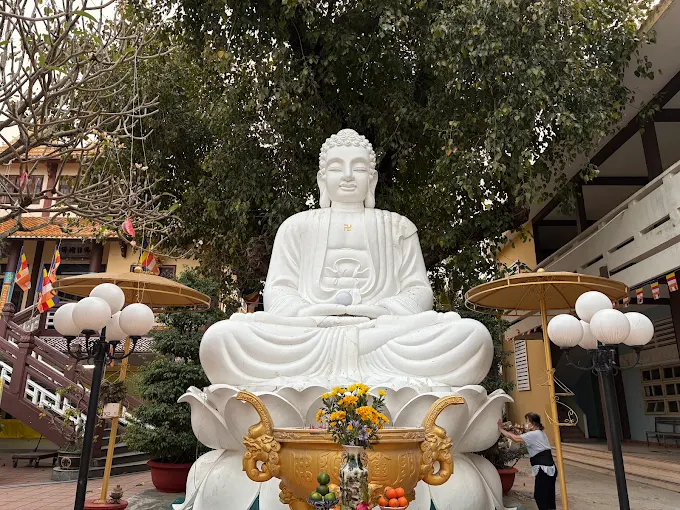Chaskhar Monastery: Serene Beacon of Mongar’s Nyingma Heritage
As dawn weaves through Mongar’s forested highlands, Chaskhar Monastery stirs in Chaskhar village, its whitewashed walls catching the first light above cedar groves. Within, a bronze Guru Rinpoche (Padmasambhava) anchors the prayer hall, his serene form beside Shakyamuni Buddha, as butter lamps cast a soft glow across faded murals. During Tshechu, prayer flags flutter in the courtyard, their colors swaying with masked dancers’ steps, honoring Nyingma’s ancient lineage. Likely founded before the 20th century, this modest temple serves Chaskhar’s Sharchop community, its rituals rooted in Dzogpachenpo (Great Perfection) teachings. Tucked in Mongar’s rugged embrace, it blends meditation and village life, its chorten gleaming as a quiet sentinel. Amid the hum of cicadas and distant streams, Chaskhar Monastery offers a sanctuary where Bhutan’s spiritual pulse resonates.
Overview and Significance
Chaskhar Monastery, nestled in Chaskhar village, Mongar, stands as a Nyingma haven, its modest halls fostering devotion among Sharchop villagers. This temple weaves ritual, community, and history, anchoring eastern Bhutan’s spiritual legacy.
Introduction to Chaskhar Monastery
Chaskhar Monastery rises in Mongar’s highlands, its white walls and wooden roof a serene emblem of Nyingma Buddhism, Bhutan’s oldest school, rooted in Dzogpachenpo teachings of innate wisdom. Likely established before the 20th century, it serves Chaskhar’s Sharchop community, blending meditation with daily life. Its prayer hall and chorten draw devotees seeking enlightenment, their chants echoing through Mongar’s forests. Set near cedar groves, it offers a glimpse into Bhutan’s Nyingma soul.
Historical Journey
The monastery’s story unfolds in Mongar’s past:
- Early Roots: Likely founded pre-20th century, tied to Nyingma’s spread in eastern Bhutan.
- Community Role: Served as a spiritual hub for Chaskhar’s villagers, linked to local lamas.
- Cultural Continuity: Maintained by caretakers, preserving Dzogpachenpo texts.
- Modern Presence: Remains a pilgrimage site, drawing Mongar’s faithful.
Cultural Significance
The monastery shapes Mongar’s spiritual fabric:
- Nyingma Anchor: Transmits Dzogpachenpo, guiding meditation.
- Community Heart: Tshechu unites Chaskhar’s Sharchop villagers.
- Historical Symbol: Reflects Mongar’s Nyingma heritage.
Unique Legacy
Its modest chorten and prayer hall define Chaskhar’s sanctity.
Community and Global Impact
- Local Ties: Hosts rituals, binding Chaskhar’s community.
- Regional Draw: Attracts eastern Bhutanese devotees.
- Cultural Note: Inspires Mongar’s spiritual traditions.
Historical Anecdotes
- Early lamas meditated in Chaskhar’s groves, blessing the site.
- Tshechu dancers once welcomed Mongar’s traders, uniting villages.
Social Role
Rituals and teachings knit spiritual and social threads.
Artistic Influence
Its murals inspire Mongar’s thangka artisans.
The monastery’s history shapes its form, where chorten and murals frame a space of reverence.
Architectural and Spiritual Features
Chaskhar Monastery’s whitewashed halls and modest chorten blend Nyingma simplicity with Bhutanese craft, its prayer hall a meditative anchor. This section unveils its design and sacred spaces.
Iconic Design
The monastery’s stone walls, topped with a sloped wooden roof, nestle in Chaskhar’s highlands. Its courtyard, fringed by prayer flags, overlooks Mongar’s cedar forests, with a small chorten gleaming at the entrance.
Key Structures
- Main Prayer Hall (Lhakhang): A compact chamber with faded murals and altars.
- Chorten: A modest stupa, a focal point for meditation.
- Caretakers’ Quarters: A small wing for resident monks.
- Courtyard: A packed-earth space for rituals and dances.
Worshipped Statues/Deities
- Guru Rinpoche: A bronze statue honors Nyingma’s founder.
- Shakyamuni Buddha: A central icon depicts enlightenment.
Materials and Techniques
Stone walls and timber beams, with mineral-pigment murals, reflect Bhutanese artistry.
Signature Elements
The chorten and Guru Rinpoche statue define the monastery’s spiritual core.
Lesser-Known Features
- Sutra Carvings: Altar beams bear Dzogpachenpo verses.
- Prayer Wheels: Line the courtyard, spun by devotees.
Preservation Efforts
Caretakers protect murals from Mongar’s humidity, maintaining woodwork.
Environmental Integration
The highland perch ties the monastery to Chaskhar’s forests, a tranquil retreat.
Artisan Narratives
Mongar painters crafted murals, preserving Nyingma iconography.
Symbolic Details
The chorten signifies enlightenment; lotus murals evoke purity.
Landscape Integration
The forest view enhances meditative calm, grounding the monastery.
These spaces cradle the monastery’s rituals, inviting devotees into Nyingma’s meditative heart.
Rituals and Practices
Chaskhar Monastery’s rituals, rooted in Nyingma’s Dzogpachenpo, blend chant and contemplation, fostering wisdom. This section explores its ceremonial rhythm.
Daily Sacred Rites
- Sutra Chanting: Caretakers recite Nyingma texts at dawn.
- Offerings: Butter lamps and incense honor Guru Rinpoche.
- Meditation: Dzogchen sessions focus on innate clarity.
Unique Practices
Before Tshechu, villagers tie new prayer flags, a communal act of renewal.
Festival Traditions
- Tshechu: In October, masked dances honor Pema Lingpa.
- Losar: New Year prayers bless Chaskhar’s community.
Visitor Engagement
Guests may join chants or observe Tshechu, guided by caretakers.
Spiritual Community Roles
Caretakers lead rites; Sharchop villagers support festivals.
Interfaith Connections
Exchanges with Kagyu monks reflect Bhutanese harmony.
Ritual Symbolism
- Butter Lamps: Light signifies wisdom.
- Prayer Flags: Colors balance elements.
Seasonal Variations
Tshechu intensifies in autumn; monsoon retreats deepen meditation.
Monastic/Community Life
Caretakers meditate; villagers tend the courtyard.
These rituals guide visitors to the monastery’s philosophical core.
Visitor Information
Chaskhar Monastery welcomes travelers to Mongar’s highlands, offering practical details to engage with its sacred heart.
Navigating to Chaskhar Monastery
In Chaskhar village, a 1-hour drive from Mongar town via the Mongar-Gyalpozhing road, the monastery’s chorten rises amid cedar groves, 20 km from Mongar Dzong.
Address of Chaskhar Monastery
Chaskhar, Chaskhar Gewog, Mongar District, Bhutan
Visiting Hours and Etiquette
- Hours: Open daily from 7:00 AM to 5:00 PM, extended during Tshechu.
- Etiquette: Dress modestly; remove shoes in the prayer hall; avoid photographing altars.
Transport Options
- Car: A 1-hour drive from Mongar via taxi.
- Bus: Mongar-Chaskhar buses stop at the gewog center, then a 15-minute walk.
- Hiking: A 30-minute trail from Chaskhar village.
Accessibility and Safety
- Accessibility: The courtyard is flat; steps limit hall access.
- Safety: Mongar is safe, but carry water for the walk.
Amenities and Surroundings
Restrooms in the courtyard; Chaskhar village offers tea stalls.
Immersive Tips
Visit in October for Tshechu dances or meditate near the chorten.
Nearby Cultural Experiences
- Mongar Dzong: 20 km away, a 19th-century fortress.
- Yagang Lhakhang: 25 km away, a Nyingma temple.
Photography Tips
Frame the chorten at sunrise; respect altar restrictions.
The monastery’s gates open to its Nyingma philosophy, where wisdom and faith unfold.
Cultural and Spiritual Insights
Chaskhar Monastery’s essence lies in its Nyingma roots and Chaskhar’s spirit, offering insights into Bhutan’s sacred depth.
Religious Philosophy
Nyingma’s Dzogpachenpo teaches innate wisdom, guiding devotees to liberation.
Environmental Spirituality
Chaskhar’s forests reflect nature’s sanctity, a Nyingma value.
Artistic Symbolism
Guru Rinpoche’s statue embodies enlightenment; chorten signifies purity.
Community Resilience
The monastery uplifts Chaskhar, fostering Sharchop devotion.
Environmental Stewardship
Villagers plant cedars, honoring Bhutan’s eco-ethos.
Meditative Practices
Dzogchen sessions cultivate clarity, open to visitors.
Cultural Narratives
Pema Lingpa’s legacy inspires Tshechu tales, binding villagers.
Historical Context
The monastery ties to Mongar’s Nyingma spread.
These insights weave a reflection on the monastery’s enduring presence.
Conclusion
Chaskhar Monastery shines as a serene beacon of Mongar’s Nyingma heritage, its modest chorten and Guru Rinpoche statue a testament to Dzogpachenpo wisdom. Tshechu’s masked dances and daily chants pulse with devotion, weaving serenity into Chaskhar’s highlands. From its prayer hall to cedar-fringed courtyard, it fosters enlightenment amid Mongar’s forests. As a Nyingma landmark, it bridges Bhutan’s ancient lineage with its vibrant present, inviting travelers to pause where prayer flags whisper timeless faith.
